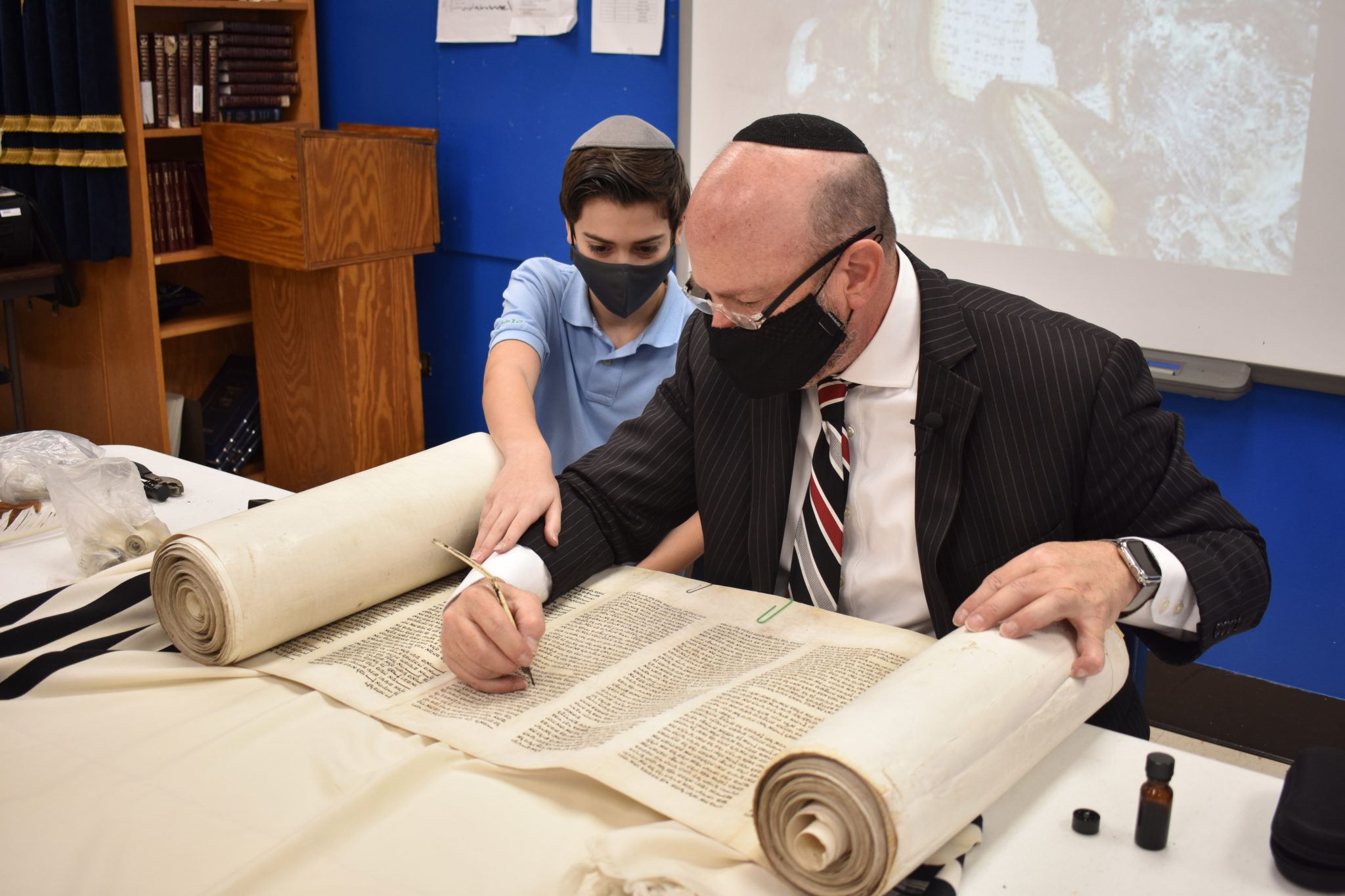Skokie students participate as scribe restores torah that survived Holocaust
post by Hillel Torah | Feb 02, 2022
[Skokie Review]
By STEVE SADIN
PIONEER PRESS | FEB 01, 2022 AT 1:40 PM
A group of eighth graders in Skokie understands that their generation will be the last to personally speak to Holocaust survivors, and they know that gives them an obligation to carry the message to future generations.
Meir Felemovicius of Skokie is one of 37 Hillel Torah North Suburban Day School eighth graders participating in the school’s 12th annual Names Not Numbers project. They are interviewing six survivors of the Holocaust, a genocide in which historians have documented that approximately six million Jews were murdered by the Nazis during World War II.
These are not ordinary interviews. Felemovicius said the conversations will be recorded and the class will produce a documentary movie telling the stories of the six individuals.
“Our generation is the last one who will hear these stories from survivors,” Felemovicius said. “We are the ones who will hear them so we can tell them to our children and grandchildren.
“Once they are gone there will be no one left who was there to tell their stories,” added Josh Koplow, another eighth grader from Skokie. “There are people now who doubt what happened. We can tell their stories so it never happens again.”
Along with documenting the lives of six survivors including Rabbi Joseph Polak, the current chief justice of the Rabbinical Court of Massachusetts whose story was filmed Monday, there is a seventh survivor this year—a Torah which survived the Holocaust.
Kaplow, Felemovicius and the rest of their classmates watched a scribe restore the Krakow Torah Tuesday on Hillel Torah’s Skokie campus so it is once again in condition to be used for study and worship.
Rabbi Reuven Brand, the founder of the Yeshiva University Torah Mitzion Kollel of Chicago, a Jewish learning center, said in a meeting with the students the Torah is the first five books of the Hebrew Bible originally written by Moses.
Torahs are still written by hand today under strict rules to assure they are “kosher” for use in worship and study. Ron Sieger, a Los Angeles based sofer, or Torah scribe, said when a Torah falls into disrepair and is no longer “kosher” a calligrapher like him can restore it.
Sieger said a Torah contains 304,805 letters written over 245 columns on animal parchment with a turkey feather pen. He did some of the restoration in front of the students. They participated by touching his shoulder as he rewrote the letter over the original calligraphy.
Felemovicius said he treasured the moment he put his hand on Sieger’s shoulder as a letter was restored. Felemovicius said participating as he did, he is fulfilling mitzvah—a commandment from God,
“It was very exciting,” Felemovicius said. “I was glad I was touching him because I didn’t want to mess it up. In a way we were helping so it was a mitzvah for us.”
The restoration process is being undertaken by Bernard Hasten and Laurie Hasten, who now divide their time between Lincolnwood and Florida. She is a past president of the school’s board of directors and a docent of the Illinois Holocaust Museum & Education Center in Skokie.
Bernard Hasten said the Krakow Torah was originally written around Krakow, Poland in 1921, was rescued from the Holocaust in 1940 and used in a Jewish Day School in San Francisco. In need of repair, the Hastens acquired it for restoration. It will be housed at Hillel Torah on a long-term loan.
By immersing themselves in the Names Not Number project—a national program in which approximately 500 students have interviewed and recorded more than 150 survivors—Laurie Hasten said the teens go beyond reading and listening in their Holocaust education.
“The kids will review the (survivors’) stories,” she said “The kids listen over and over again to the interviews and edit them as they decide what is going to be part of the movie.”
Laurie Pinchot, a Hillel Torah teacher for the past 13 years, said she has helped guide the students through the program since its inception at the Skokie school. The current effort began in November as the teens began learning what they needed to do.
Koplow said he and his classmates worked with a videographer to learn how to produce the documentary. They learned from a journalist how to approach the survivors to elicit their stories comfortably.
“We learned how to prepare to do an interview,” Koplow said. “We had to learn a lot more about the Holocaust and their stories to prepare the questions.”

